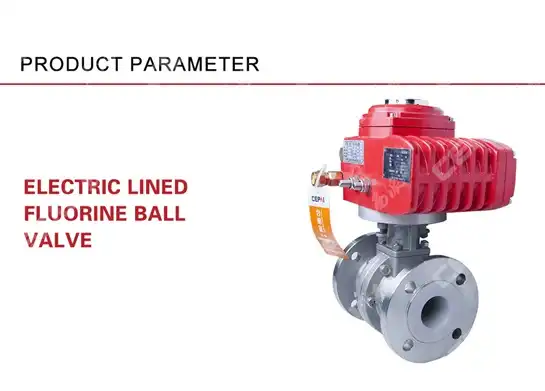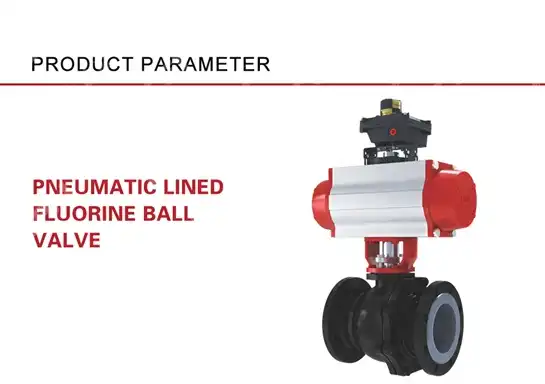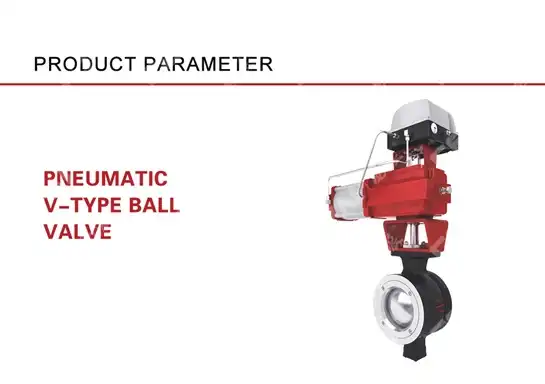Understanding the Ball Valve Key Differences between pneumatic and electric ball valves clarifies their unmistakable parts in liquid control frameworks. An Electric Ball Valve works through an electric actuator, giving exact control and mechanization with negligible human intercession. In differentiate, a pneumatic ball valve employments compressed discuss to drive the valve’s quarter-turn instrument, advertising quick reaction and vigorous execution beneath different mechanical conditions. These crucial incitation contrasts impact components such as upkeep, control precision, and appropriate applications.
Operational Mechanisms: Actuation Methods and Their Implications
Ball Valve Key Differences show that pneumatic ball valves rely on air pressure to actuate the spherical disc inside the valve body, enabling rapid quarter-turn operation to open or close the fluid passage. This plan offers high-speed reaction and solid shut-off capabilities, particularly advantageous for operations requiring visit cycling. Electric ball valves are prepared with electric actuators controlled through wiring, permitting for fine-tuned, computerized stream control. This smooth operation suits integration with progressed control frameworks for exact liquid flow management. If your application requests quick, monotonous operations with tall solidness and less forthright fetched, at that point pneumatic valves are more appropriate. Alternately, if exact stream direction and farther operation capabilities are needs, electric valves serve better.

Performance and Precision: Flow Control and Leakage Prevention
When comparing stream control capabilities, Ball Valve Key Differences highlight that electric ball valves offer superior balance and precision due to their advanced electronic actuators. This comes about in negligible weight drop and upgraded fixing components, decreasing potential spillage through the valve situate and circular circle interface. Pneumatic valves exceed expectations in unforgiving situations and in frameworks where fast shut-off is fundamental, keeping up full bore or diminished bore stream ways successfully. Their fixing components and fabric determination bear vigorous spillage anticipation, in spite of the fact that they might not accomplish the micro-adjustment exactness of electric incited valves. If your handle requires exact and variable stream rates with negligible spillage and integration into mechanized frameworks, electric ball valves demonstrate invaluable. If fast shut-off and resistance to wear in requesting mechanical applications are basic, pneumatic valves stand out.
Maintenance and Reliability: Longevity and Service Considerations
Pneumatic ball valves include less electronic components, bringing down the hazard of electrical disappointment and streamlining investigating. Their support as a rule centers on discuss supply quality and actuator seals, making them moderately simple to benefit in field conditions. Electric ball valves, whereas advertising fabulous control precision, require occasional assessment of electrical wiring, actuator engines, and control frameworks. In any case, mechanical progresses have made strides their strength, and prescient support is encouraged by more brilliant diagnostics. If you prioritize ease of upkeep and life span with negligible electronic parts presentation, pneumatic valves are best. For scenarios esteeming integration with shrewd frameworks in spite of somewhat higher upkeep complexity, electric ball valves are fitting.
Applicable Scenarios and Industry Preferences
Ball Valve Key Differences can be seen in how pneumatic ball valves find broad use in oil and gas, chemical processing, and heavy manufacturing environments, where durable valve body materials and rapid actuation are essential for reliable performance. Their capacity to work viably over wide temperature ranges and forceful liquid mediums is a outstanding advantage. Electric ball valves suit water treatment, HVAC, pharmaceutical, and nourishment businesses where exact liquid elements, controlled shut-off, and solid computerization are required. Their smooth handle operation and compatibility with computerized control systems make them perfect for progressed channeling systems. If your mechanical application requests tough execution beneath extraordinary conditions with direct operation, select pneumatic valves. For situations that require high-precision stream control with upgraded computerization, electric ball valves are recommended.

Pros and Cons Summary Table of Pneumatic vs Electric Ball Valves
| Aspect | Pneumatic Ball Valve | Electric Ball Valve |
|---|---|---|
| Actuation Method | Compressed air actuates valve; reliable in hazardous areas | Electric motor driven; precise and automated control |
| Flow Control | Fast on/off with less modulation precision | Excellent modulation and variable control |
| Maintenance Ease | Simple mechanical parts; minimal electronic failures | Requires electrical inspection and diagnostics |
| Response Speed | Rapid quarter-turn operation | Slower but controlled actuation |
| Temperature and Pressure Range | Wide range; suitable for extreme conditions | Moderate range; depends on actuator specifications |
| Integration Capability | Limited to pneumatic systems | Highly compatible with automated control systems |
CEPAI Group Co., LTD.’s Ball Valve Key Differences Advantages
- Exceptional durability ensuring valves withstand harsh industrial environments and extended operational cycles.
- High-precision control performance facilitated by advanced electric actuators and optimally designed pneumatic actuators.
- Continuous R&D investment producing innovative valve designs with patented technology and technological barriers to enhance reliability.
- Diverse product range tailored to meet various industry needs including full bore and reduced bore ball valves, suitable for diverse fluid dynamics and pressure requirements.
- Comprehensive pre-sales consultation and precise valve selection support ensuring optimal product choice for specific piping systems.
- Professional installation, debugging, and training services to guarantee smooth implementation of valves in your facility.
- Robust after-sales service including maintenance, remote monitoring, and intelligent service for seamless valve operation over time.
- ISO Quality System compliance guarantees rigorous inspection and testing processes from raw materials to final products.
- Strong brand reputation built on industry recognition, supplier stability, and efficient logistics ensuring timely product delivery.
Concluding Insights
The choice between pneumatic and electric ball valves hinges on specific operational criteria such as actuation speed, control precision, maintenance ease, and application environment. Both types feature robust sealing mechanisms, reliable quarter-turn valve operation, and varied port sizes adapting to industrial demands. Recognizing these ball valve key differences enables optimized fluid handling and piping system efficiency. CEPAI Group Co., LTD. combines technical know-how and quality assurance, guiding clients confidently through the valve selection process.
Call to Action: Discover the Ball Valve Key Differences with CEPAI Group Co., LTD.
Exploring the Ball Valve Key Differences helps you make informed decisions tailored to your application's unique demands. CEPAI Group Co., LTD., a leading manufacturer and supplier of premium ball valves, supports your procurement needs with unmatched expertise and product quality. Our valves excel in durability, precision, and innovation, backed by strict ISO quality management and comprehensive customer support.
Whether you seek pneumatic or electric ball valves for sale, trust CEPAI Group Co., LTD. for custom solutions designed with excellence. Contact us at cepai@cepai.com to discuss your project's requirements or to receive tailored valve selection advice. Partner with us to harness optimal fluid control solutions and experience the advantage of expertise, innovation, and service in every valve.
References
1. Valve Handbook, 6th Edition, by Philip L. Skousen, detailing mechanical and pneumatic valve technologies.
2. Industrial Valves: Principles and Applications, by Samuel Youd, highlighting electric actuator integration in process control.
3. ASME Standard on Ball Valve Design and Testing, providing guidelines on valve seat sealing and pressure drop considerations.
4. Fluid Control Systems Engineering, Journal of Fluid Dynamics, documenting comparative performance data of pneumatic vs electric valves.
5. International Journal of Industrial Automation, covering maintenance practices and reliability of different valve actuation methods.
6. Instrumentation and Control Systems in Process Industries, by Donald P. Eckman, focusing on valve selection in automated piping networks.
_1746598557316.webp)



